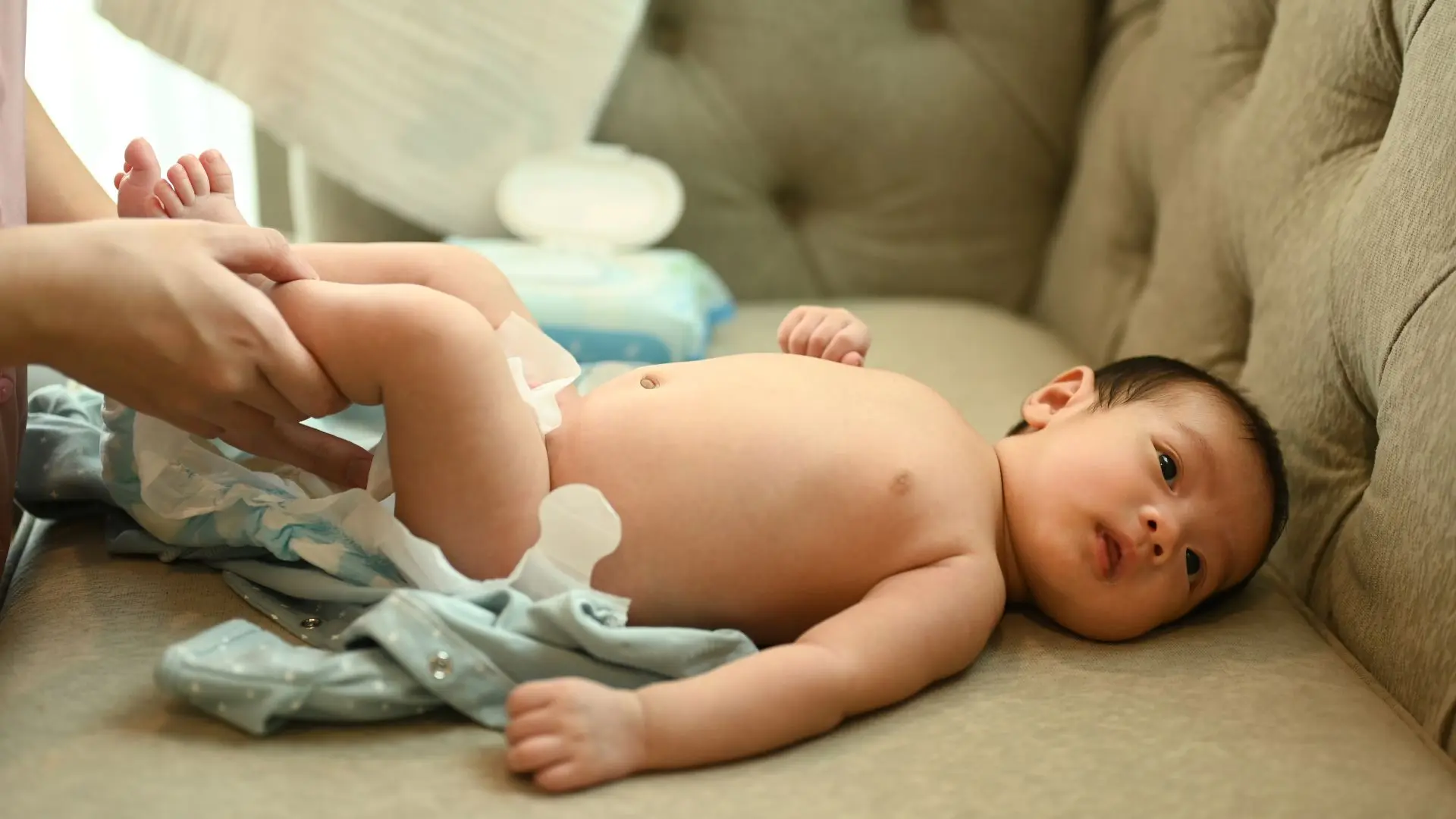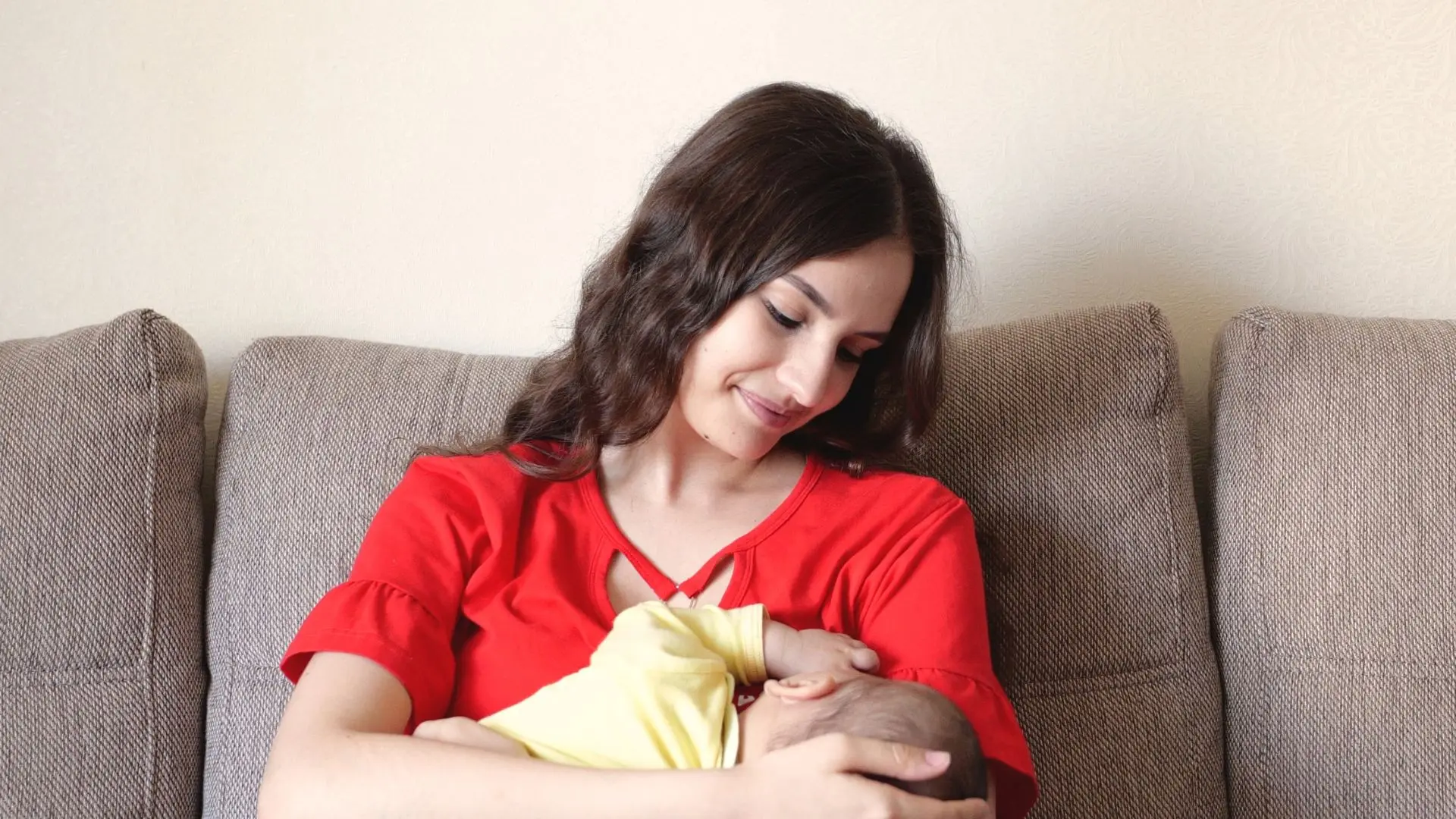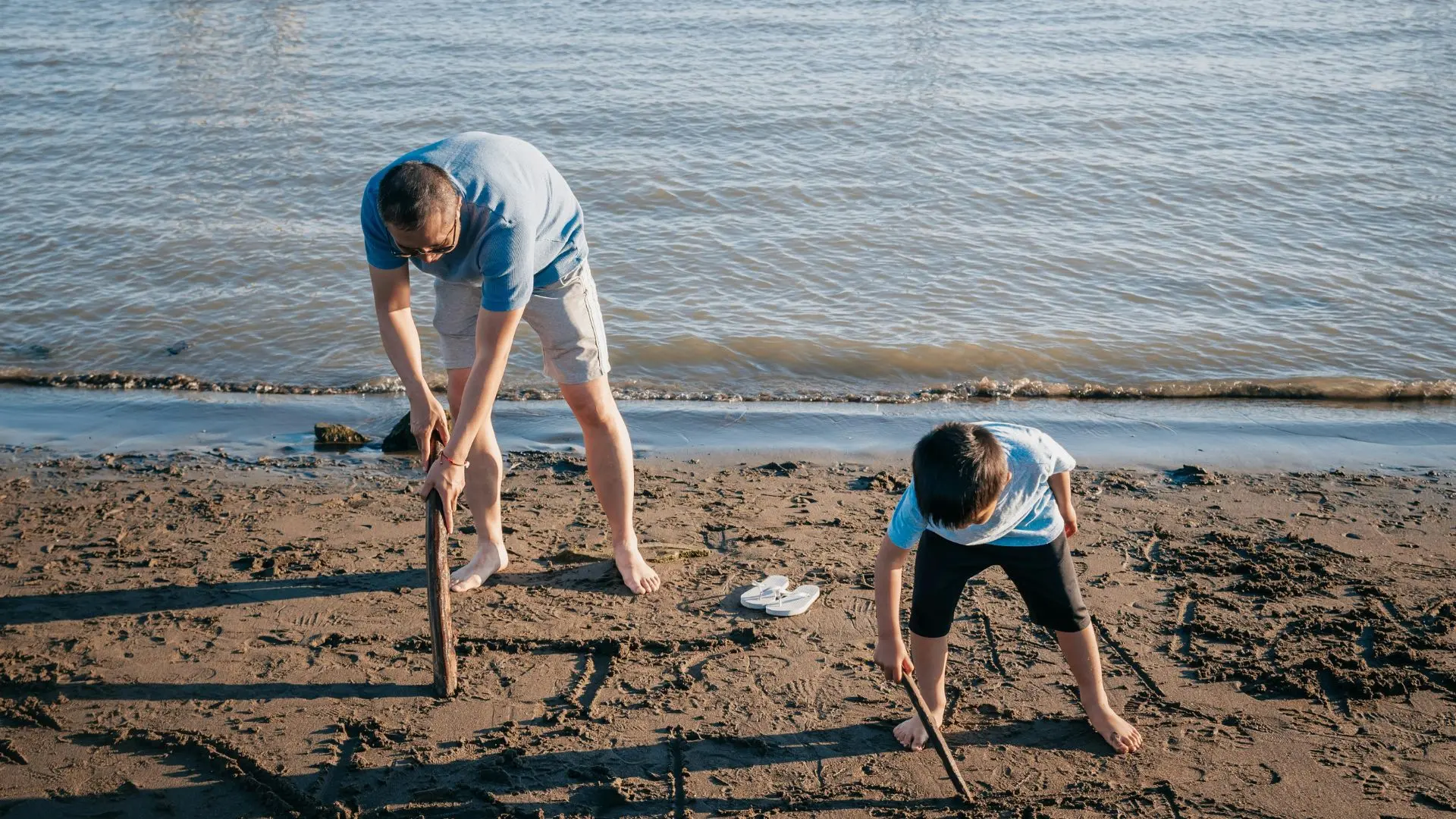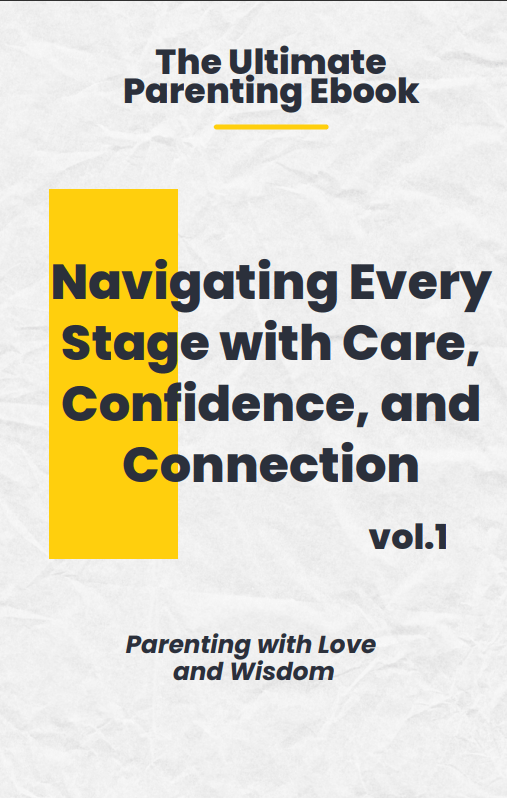
Potty training is not just about teaching your child how to use the toilet; it’s about helping them understand their body’s signals, what those feelings mean, and learning to communicate when they need to go. Each child is unique, and what works for one may not be effective for another.
As a parent who has gone through it, I know that some days feel like big wins, while others seem like setbacks. Let’s tackle real, practical solutions to handle these challenges effectively.
In This Blog
ToggleWhen To Start Potty Training
Starting too soon or when your child isn’t ready can make the potty-training journey longer and more challenging. Most children show readiness between 18 months and 3 years, but every child’s timeline is different. Here’s how to recognize when it might be time to start:
- Stays Dry Longer: If your child can stay dry for two hours or more, it’s a sign their bladder control is improving.
- Shows Interest: Does your child follow you to the bathroom or show curiosity about how the toilet works? This interest is a great indicator.
- Awareness of When They’re Going: If your child can sense or tell you before or during an accident, it’s a sign they’re beginning to understand bodily cues.
Signs That Your Child Needs to Go
Look out for signs that your child needs to go or is already going to the bathroom. Some common signs include:
- Pausing from their current activity and looking around, possibly at you.
- Shifting or squirming in place.
- Tugging at their diaper or clothing.
- Telling you they need to go.
- Moving to a quieter area away from others.
- Showing a worried or uncomfortable expression.
- Approaching you for help.
- Heading towards the bathroom or potty on their own.
- Making certain noises or sounds that signal they need to go.
If you notice these signs, give them a little time to finish what they’re doing or gently redirect them to the bathroom. Remind them they can return to their activity after using the toilet.
Differences Between Boys and Girls Potty Training
1. Readiness Age
- Girls generally show signs of readiness earlier, often between 18-24 months.
- Boys tend to start later, typically around 2.5 to 3 years old.
2. Bladder Control
- Girls often gain bladder control faster and can stay dry longer.
- Boys may take longer to develop bladder control, especially for nighttime dryness.
3. Physical Training Differences
- Girls are taught to sit on the potty from the start and the process is usually more straightforward.
- Boys initially learn to sit to pee, but later transition to standing. Teaching them to aim properly can be tricky and takes time.
4. Hygiene Lessons
- Girls need to be taught to wipe from front to back to avoid UTIs.
- Boys focus more on the aim and control of their urine stream.
5. Behavioral Differences
- Girls tend to be more receptive to the potty-training process and often mimic adult behavior more easily.
- Boys can be more resistant and distracted, making potty training potentially slower. It helps to make the process fun and engaging.
6. Nighttime Potty Training
- Girls typically become dry at night earlier than boys, often by age 3.
- Boys usually take longer to stay dry overnight, with many not mastering it until 4 or 5.
7. Potty Training Tools
- Girls may transition to regular toilets more easily, without needing special equipment.
- Boys may benefit from a potty-training urinal or a step stool for standing.
While the basics of potty training are the same, boys and girls differ in terms of readiness, physical skills, and the time it takes to master certain aspects like bladder control and nighttime dryness. Adapt your approach to your child’s needs and pace.
Step-by-Step Process for Potty Training a Toddler
Potty training doesn’t have to be overwhelming. By following a structured, step-by-step approach, you can guide your child through the process with less stress and more success.
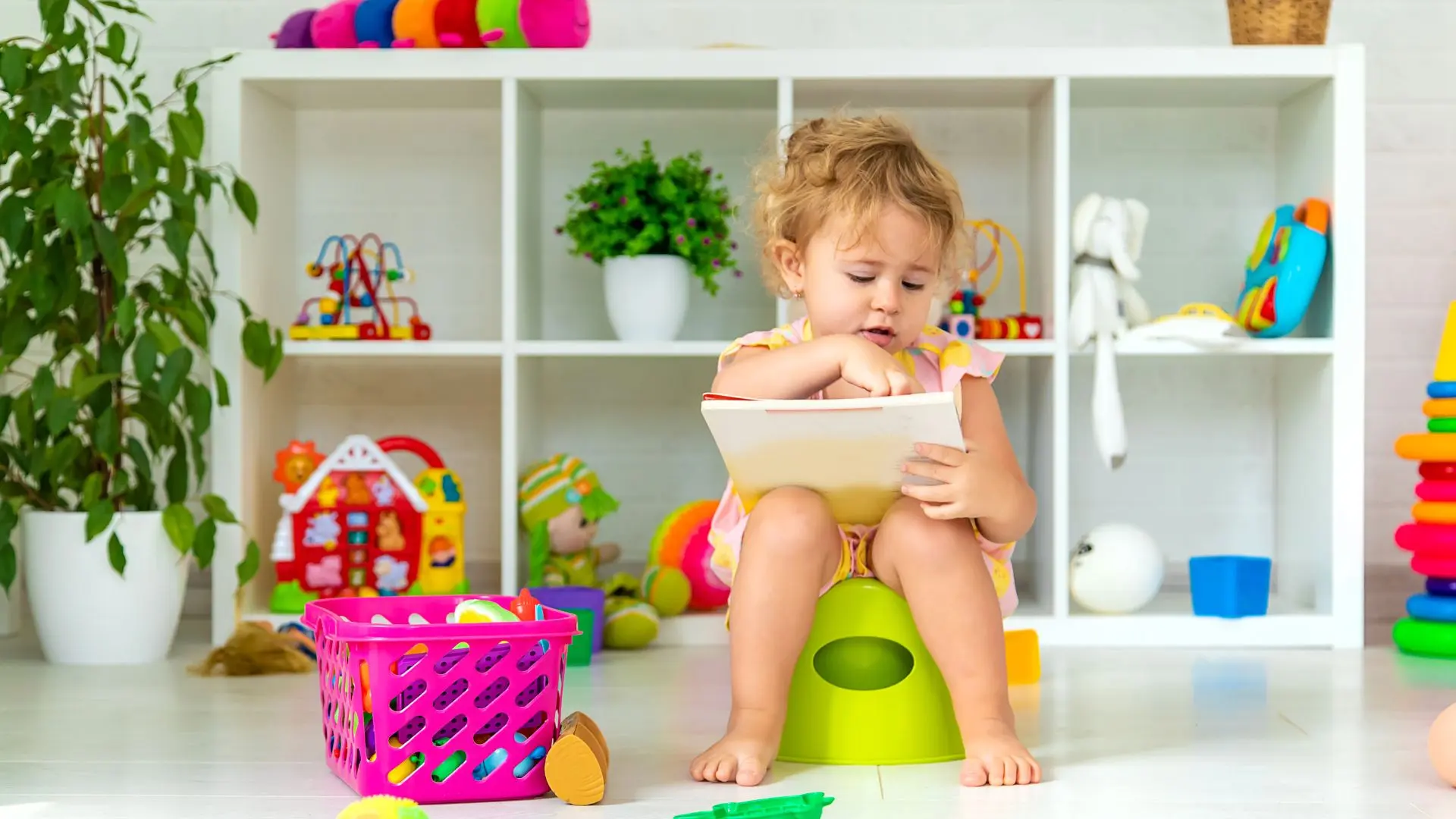
Here’s an informative and easy-to-follow guide that breaks it all down.
1. Introduce the Concept
Before starting, it’s important to introduce your child to the idea of potty training. At this stage, it’s not about expecting them to use the toilet, but about familiarizing them with the concept. You can use simple language to explain the purpose of the potty, such as, “We use the potty to keep our body clean.”
Potty training books are a great tool for making this concept more relatable and fun. Books with characters that your child can identify with or enjoy will make them more likely to engage with the idea.
2. Choose the Right Equipment
Choosing the right potty setup can make all the difference. If you start with a potty chair, it provides a secure, smaller option that may feel safer for your child. Let them explore it before they start using it. Let them sit on the potty fully clothed to get used to it.
If you decide to go straight to the toilet, a potty-training seat that fits on the regular toilet can help make the transition easier once your child is comfortable sitting. Ensure that whatever equipment you choose feels secure and accessible to them.
3. Create a Routine
Establish a consistent potty-training routine that fits into your child’s daily schedule. Toddlers thrive on predictability, and setting regular times for sitting on the potty—such as after meals, naps, and before bed—reinforces the habit without overwhelming them.
Even if they don’t go every time, the key is consistency. As your child gets used to this routine, they’ll learn to associate these moments with potty time.
4. Positive Reinforcement
A calm, encouraging attitude is essential for success. Avoid punishing accidents, as it can create fear or shame. Instead, focus on praise, no matter how small the effort. If your child sits on the potty or even just tries, cheer them on.
Positive reinforcement, like clapping, saying “Great job!” or giving them a sticker, reinforces the behavior without putting pressure on them. It’s about celebrating the effort rather than just the outcome.
5. Teach Hygiene Basics
One of the most important parts of toilet training is teaching your child proper hygiene. Show them how to wipe properly, especially for girls, who need to wipe from front to back to avoid urinary tract infections. Also, make handwashing a part of every potty visit.
Help them understand the importance of flushing the toilet, washing their hands, and wiping clean to maintain hygiene. Starting these habits early ensures they understand that potty training is not just about using the toilet but also about cleanliness.
6. Encourage Sitting Regularly
In the early stages of potty training, encourage your child to sit on the potty regularly, even if they don’t need to go. This will help them develop the habit and get used to the process.
Forcing them to sit when they’re not ready or feeling resistant can create unnecessary stress. Make it a calm, pressure-free experience, allowing your child to feel like they are in control of the process.
7. Celebrate Every Small Progress
It’s important to acknowledge all milestones, not just the final success of using the toilet. Celebrate when your child tries sitting on the potty, even if they don’t go.
Praising their attempts and marking small victories helps them build confidence. Rewarding progress with stickers, high-fives, or a special song can help them stay motivated without the focus being solely on the end result.
8. Prepare for Accidents and Setbacks
Accidents will happen, and it’s important to manage expectations. Potty training isn’t a one-and-done process. Sometimes, your child might have setbacks or resist using the potty altogether.
Stay calm and reassuring. Explain that accidents are a normal part of learning, and don’t make them feel bad. By acknowledging setbacks calmly, you’ll help your child feel safe and less stressed during this time.
9. Make Potty Time Fun and Engaging
Keep the experience enjoyable by adding a fun twist. Bring along a potty-training book, a favorite toy, or even a song to make potty time feel less like a task.
The idea is to remove the pressure and help your child associate using the potty with something enjoyable. A fun, relaxed atmosphere can make them more willing to engage in the process.
10. Stick to a Consistent Schedule
Consistency is key in potty training. Try to maintain a schedule for potty breaks every 1-2 hours. Even if your child doesn’t need to go, regular bathroom visits will help reinforce the routine.
This gives them opportunities to practice and become familiar with the process. However, it’s equally important to remain flexible if your child seems too distracted, tired, or unwilling at certain moments.
11. Prepare for Public Restrooms
Transitioning to using public restrooms can be intimidating for toddlers. Start by introducing your child to quieter, less crowded bathrooms to make them feel more comfortable.
Gradually expose them to busier restrooms to help them feel confident when away from home. For some kids, this can take time, so be patient and reassuring as they adjust to this new environment.
12. Nighttime Training
Once daytime potty training is progressing, you can start focusing on nighttime dryness. Limit liquids an hour before bedtime, and make sure your child is awake enough to use the toilet before going to sleep.
Some children may take longer to stay dry overnight, so nighttime training can be a separate phase that happens after the daytime training has been established.
Avoiding Common Potty-Training Mistakes
Even the best plans can hit some snags. Avoid these common mistakes for a smoother experience:

- Starting Before Readiness: Beginning too early often leads to setbacks. Wait until your child consistently shows readiness signs.
- Punishing Accidents: Children are sensitive to negative reactions. Keep a calm, reassuring tone to help them feel safe and encouraged.
- Comparison with Other Kids: Every child has their own pace. Comparing their progress can add unnecessary stress for both you and your child.
- Over-Emphasizing Rewards: Using rewards is fine, but avoid making them the main focus. Overemphasis can lead to pressure and resentment.
Best Products for Potty Training Success
The right tools can make a world of difference. Here are essentials to make potty training smoother:
- Potty Chairs or Toddler Toilet Seats: Choose something comfortable that makes them feel secure and independent.
- Training Pants: Reusable or disposable training pants provide a step between diapers and underwear.
- Reward Charts: Visual progress with stickers or charts can keep them motivated.
- Portable Potties: A travel-friendly potty helps you maintain routines outside the home, easing any anxiety they may feel about using public restrooms.
Conclusion
Potty training is a journey, not a race. By following these steps—introducing the concept early, maintaining a calm routine, reinforcing progress, and offering plenty of praise—you’re setting your child up for success.
Potty training is about building confidence, creating a positive atmosphere, and supporting your child through every step of the way. Be patient, and celebrate each success along the way, big or small.
Want more parenting insights? Sign up for our newsletter to receive tips on toddler milestones, overcoming challenges, and guidance on every step of your parenting journey.
By incorporating a balanced, flexible approach to potty training and recognizing your child’s unique needs, you’re setting them up for success in one of their first big life skills.
You may also be interested in : Why Sleep Regression Happens and How to Handle It Like a Pro
FAQs
1. When should I start potty training my toddler?
Start potty training when your child shows signs of readiness, typically between 18-24 months for girls and 2.5-3 years for boys. Look for signs like staying dry for longer periods, showing interest in adults using the toilet, or verbal cues like saying “potty.”
2. What is the best potty training method for toddlers?
The best method is a gentle, consistent approach. Introduce the concept of potty training with books, establish a routine, use positive reinforcement, and be patient. Every child learns at their own pace, so adapt based on their readiness and comfort level.
3. How do I handle potty training accidents?
Accidents are part of the learning process. Stay calm and reassure your child. Instead of punishment, use the opportunity to reinforce that accidents are normal. Encourage your child to try again next time and praise their effort.
4. Should I use a potty chair or a toilet seat?
Both options can work, but it depends on your child’s comfort level. A potty chair is often easier for younger children, as it’s smaller and feels more secure. A toddler toilet seat is good for when they’re ready to transition to the regular toilet.
5. How do I know if my toddler is ready for potty training?
Signs of readiness include staying dry for longer periods, showing interest in using the toilet, following simple instructions, and being able to understand the concept of potty training. If they resist or aren’t ready, it’s okay to wait a little longer.
6. How do I potty train a boy?
Start with a potty chair, and initially, boys can sit down to pee. Once comfortable, transition to standing. Encourage them to aim properly and make it fun with rewards like stickers or praise to reinforce good behavior.
7. What are the signs that my child is ready to start potty training?
Look for signs such as staying dry for at least two hours, showing an interest in using the toilet, wanting to wear underwear, and being able to communicate their needs verbally or through body language.
8. How can I make potty training fun for my toddler?
Use potty training books, sing songs, let them choose fun underwear, and offer rewards like stickers. Turning potty time into a fun experience helps keep your child motivated and engaged.
9. Is potty training different for boys and girls?
Yes, boys tend to take a bit longer to potty train than girls, especially for nighttime dryness. Girls often have better bladder control earlier. Boys also learn to stand and aim, which requires extra patience and practice.
10. How do I potty train at night?
Nighttime potty training is usually the last phase. Limit liquids an hour before bed, and ensure your child uses the potty before sleep. Be patient—most children don’t stay dry at night until they’re 4-5 years old.
11. What should I do if my toddler refuses to potty train?
If your child refuses, don’t force them. Take a break and try again in a few weeks. Make sure the process is fun and positive, and offer gentle encouragement without pressure. Every child progresses at their own pace.
12. How do I potty train during travel or outings?
Bring a portable potty or a seat cover for public toilets. Pack extra clothes, wipes, and a small potty training kit. Be sure to plan potty breaks regularly and keep your child’s routine as consistent as possible.
13. How can I help my toddler transition from diapers to underwear?
Start by introducing the idea of wearing underwear. Celebrate when they try to use the potty, and encourage them to wear the underwear, even if accidents happen. Positive reinforcement helps build confidence in making the transition.
14. Should I use rewards for potty training?
Yes, rewards like stickers, claps, or a small treat can be effective, as long as they’re used to encourage positive behavior. Avoid over-relying on rewards that might create pressure or expectation. Keep it fun and stress-free.
15. When should I stop using pull-ups?
Pull-ups can be a useful training tool when transitioning to underwear, but they shouldn’t replace consistent potty training. Gradually move away from pull-ups once your child is consistently using the potty during the day, and switch to underwear.
16. How long does it take to potty train a toddler?
Potty training duration varies. Some children can be fully trained in a few weeks, while others may take several months. Be patient and consistent, focusing on progress rather than perfection.
17. How do I teach my toddler to wipe properly?
For girls, teach them to wipe from front to back to avoid urinary tract infections. For boys, teach them to wipe their bottom thoroughly after using the toilet. Consistency and positive reinforcement will help make hygiene habits stick.
18. What are the common potty training challenges?
Challenges include accidents, resistance, difficulty with nighttime dryness, and transitioning to public restrooms. Staying calm, using positive reinforcement, and being patient with your child can help overcome these hurdles.
19. How can I potty train my toddler in the summer?
Summer is an ideal time for potty training as your child can go without diapers or pants, making it easier for them to recognize the urge to go. Spend lots of time at home to practice, and encourage water intake to practice potty breaks more frequently.
20. How can I potty train a late starter?
If your child is older and still not potty trained, use a calm, consistent approach. Follow the same steps as with younger children but with more patience and understanding. Use rewards, avoid pressure, and be consistent with routine.

